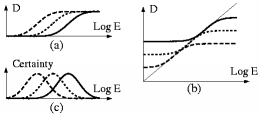Wyckoff principle (Extended Response Photography)
Here are the 2 exposures that made up a family portrait I took a number
of years ago. Deliberately, I never took a correctly exposed picture.
Instead, I took one grossly overexposed picture and one grossly underexposed
picture. These two pictures provided me with a much richer description of
the scene than a correctly exposed picture would have.
Dark exposure
Light exposure
Comparagram
Composite image
(Fullsize high resolution images are
in mannfamily_dark.jpg and mannfamily_light.jpg.)
Notice how the combined image captures both the shadow detail of the
deliberately overexposed image, and the highlight detail of the deliberately
underexposed image.
I call this the "Wyckoff principle" in honor of Charles Wyckoff,
inventor of the XR film, black and white film implemented on a color
film stock (processed C22).
It's always been a dream of
mine to figure out a way to develop the old C22 film (or maybe appropriate
C41 to this purpose with some kind of hardner), and do this the more
nostalgic (though less practical in today's digital age) way.
Let me know if you're also interested in the tradition behind the Wyckoff
principle or if you have any leads on developing Wyckoff's film.
Visit
The Wyckoff Theory Page
ece1766 skeletal and example implementations
skeletal program pnmwyckoff.c
corrected program example to use as skeletal
framework for assignments in chapter 5